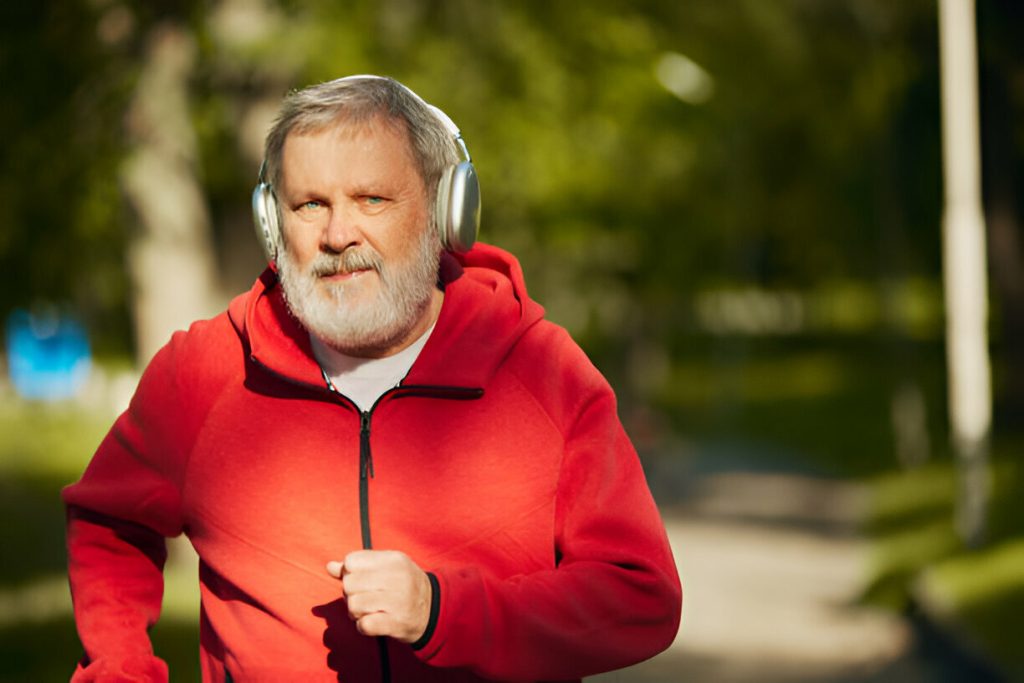Fitness Advice And Help
Physical Activity
Physical exercise plays a crucial role in your cardiac rehabilitation (CR) by improving physical fitness, heart health, and overall quality of life. It helps the circulatory system in numerous ways with the end outcome reducing blood pressure, improving blood flow and oxygen usage. All of this equates to a greater proportion of people living longer lives with a higher quality of life. It also helps increase our feel good hormones called endorphins and reduces the risk of blood clotting inappropriately.
Below I will outline the benefits demonstrated by exercise based cardiac rehab. This incorporates numerous studies providing data on the benefits on physical parameters, which I hope you will find inspiring. The impact on good mental health and body positivity should not be underestimated as it provides some form of control back to you during your recovery. By feeling better we hope this will encourage further positive life choices setting off a positive affirmation cycle.
To demonstrate the impact on physical function researchers look at certain parameters including METs, Vo2 MAX and PAO2. Metabolic equivalents (METs) are a way to measure the intensity of physical activity by indicating how much energy is burned while performing an activity compared to while sitting quietly:
• 1 MET: The amount of energy used while sitting quietly, which is roughly equivalent to 1 kcal/kg/hour
• Light intensity: 1.6–3.0 METs, such as walking slowly or standing in line
• Moderate intensity: 3.0–6.0 METs, such as walking briskly, vacuuming, or raking leaves
• Vigorous intensity: 6.0+ METs, such as walking very quickly, running, taking an aerobics class
METs can be used to calculate calories burned but should only be used as a guide because other factors like fitness level, body composition, and temperature can affect how much energy is actually expended. The American College of Sports Medicine and American Heart Association recommend that healthy adults aged 18 to 65 get 30 minutes of moderate exercise five days a week, or 20 minutes of vigorous aerobic exercise three days a week.
VO2 max, or maximal oxygen consumption, refers to the maximum amount of oxygen that an individual can utilize during intense or maximal exercise. This measurement is generally considered the best indicator of cardiovascular fitness and aerobic endurance. The more oxygen a person can use during high level exercise, the more energy a person can produce. This test is the gold standard for determining cardio-respiratory fitness because the muscles need oxygen for prolonged aerobic exercise, and the heart must pump adequate amounts of blood through the circulation to meet the demands of aerobic exercise.
Types of Exercises in Cardiac Rehabilitation
- Aerobic exercise: Walking, cycling, and swimming improve cardiorespiratory endurance.
- Resistance Training: Weightlifting enhances muscle strength, which is crucial for overall functional capacity.
- Flexibility Exercises: Stretching improves joint mobility and reduces injury risks.
- High-Intensity Interval Training (HIIT): Emerging evidence shows that HIIT may provide superior benefits for VO2 max compared to moderate-intensity exercise, though it requires close monitoring for cardiac patients.

Aerobic Exercise (Walking, Cycling, Swimming)
Aerobic exercise forms the foundation of most cardiac rehabilitation programs because of its well-documented benefits on cardiovascular health.
Benefits
• VO2 MAX. Aerobic exercise significantly improves peak VO2 max, enhancing the heart’s ability to deliver oxygen.
• Regular aerobic activity lowers both systolic and diastolic blood pressure by an average of 8–10 mmHg in hypertensive cardiac patients
• Lowers triglycerides and LDL cholesterol while increasing HDL cholesterol. A meta-analysis found significant reductions in LDL cholesterol (~10%) and increases in HDL cholesterol (~5%) after 6 months of aerobic exercise .
• Ejection fraction (the percentage of blood leaving the heart each time it squeezes. The heart requires a certain amount of residual blood in the chambers so they don’t collapse so a healthy ejection fraction is around 60%, whereas an ejection fraction under 33% reflects a poorly pumping heart.) Studies show EF improvements of ~5% after 12 weeks of aerobic training in patients with heart failure with reduced ejection fraction.
Resistance training (Weightlifting, Bodyweight Exercises)
Many people do not realise the benefits of resistance training but I have always encouraged a mixture of aerobic and resistance in terms of improving physical capacity and resilience. Resistance training complements aerobic exercise by improving muscle strength and functional capacity.
VO2 Max: While resistance training primarily enhances muscular strength, combining it with aerobic training leads to greater improvements in VO2 max than aerobic training alone.
Blood Pressure: Resisting lowers resting blood pressure, particularly in hypertensive patients.
Lipid Profiles: Improves lipid metabolism, improving cholesterol and triglyceride levels with an associated with a 5% reduction in triglycerides and an increase in HDL cholesterol .
Ejection Fraction: Studies on combined programs found a 3–4% improvement in EF among heart failure patients after 12 weeks of combined training.
High-Intensity Interval Training (HIIT)
HIIT comprises of short bursts of high-intensity exercise with periods of rest or low-intensity activity. It is particularly effective for improving VO2 max but may not be appropriate for everyone and should only be done after consultation with your doctor due to the strain it puts on your body.
VO2 Max: shows superior improvements in VO2 max compared to moderate-intensity aerobic exercise. A 2020 meta-analysis found VO2 max improvements of 20–25% with HIIT compared to 15–17% with moderate-intensity aerobic exercise in cardiac patients .
Blood Pressure: HIIT reduces both systolic and diastolic BP comparable to aerobic training in a systematic review reported average reductions of 7 mmHg in systolic BP and 5 mmHg in diastolic BP following 12 weeks of HIIT .
Ejection Fraction: HIIT improves EF in heart failure patients in a short period with a 6% improvement seen within 8 weeks.
Although we do not currently oversee physical exercise we very much recommend that you follow the guidance set by cardiac rehabilitation provided by the NHS. It is clear that the physical and mental benefits provided are backed by research. Please do not be put off by perceived small numbers, for example a ‘5% improvement’ may seem small but in the realm of therapeutics for heart disease all these incremental improvements add up to significantly reduce risk of further events and illness.
What are the benefits on cardiovascular function?
Increased Cardiac Output and VO2 Max
Exercise-based CR significantly improves maximal oxygen uptake (VO2 max). This adaptation enhances the heart’s ability to pump blood effectively, even after myocardial infarction. A 2016 meta-analysis showed that CR programs including aerobic training improved VO2 max by an average of 17%, reducing all-cause mortality rates.
Reduced Mortality and Morbidity
Lower Risk of Death: Exercise-based CR reduces mortality from cardiovascular causes and overall mortality. A Cochrane review (2016) analyzing 63 trials found a 26% reduction in cardiovascular mortality and a 20% reduction in all-cause mortality among those who participated in CR compared to those who did not.
Endothelial Function
The endothelium is the one-cell thick lining of the arterial wall. Dysfunction of the endothelium puts you at risk of inflammation, plaque formation and platelet adhesion (platelets are blood fragments involved in blood clotting – if they are adhering to the arteriole walls they can accumulate to create larger clots that can break off and travel upstream to cause heart attacks or strokes). Regular exercise helps improve endothelial function, reducing arterial stiffness and enhancing their relaxation, which is vital for blood pressure regulation and reducing cardiovascular risks. Studies have demonstrated that both aerobic and resistance training improve arterial elasticity, even in patients with coronary artery disease.
Improved lipid profiles
Exercise contributes to better cholesterol management by raising HDL and levels and lowering triglycerides and LDL; demonstrated by a meta-analysis of cardiac rehab participants showed consistent improvements in lipid levels over a 12-week period of structured exercise programs.
Reduced Risk of Rehospitalization
Patients participating in exercise-based CR programs experience fewer hospital readmissions and complications compared to non-participants as demonstrated in a 2020 systematic review found a significant reduction in unplanned hospitalizations among cardiac patients who engaged in supervised exercise programs.
Impact on Cognitive Health
Reduction in Depression and Anxiety
Even without considering the physical improvements that we hope you will feel that regular exercise boosts your mental wellbeing significantly. CR programs that incorporate exercise have been shown to aid alleviation of the symptoms of depression and anxiety. The Heart and Soul Study found that physical activity was associated with a 42% lower risk of depressive symptoms in patients with coronary heart disease.
Enhanced Cerebral Blood Flow and Oxygenation: Regular aerobic exercise increases cerebral blood flow and oxygen delivery to the brain, enhancing cognitive performance. Evidence has shown that aerobic exercise in older adults with cardiovascular disease improved cerebral perfusion, particularly in areas associated with memory and executive function. A 2021 meta-analysis concluded that moderate-to-high intensity aerobic exercise significantly enhances global cognitive function, especially in cardiac patients.
Improvements in Executive Function and Memory. Executive functions and memory are commonly impaired in cardiac patients due to reduced cardiac output and consequent related under-perfusion of the brain (the brain is very sensitive to lower levels of oxygen). Exercise restores these functions through improved nerve and hormone-driven stimulation of the blood vessels. Completing 12 weeks of aerobic exercise during CR has been associated with significant improvements in attention, memory, and executive function in patients recovering from myocardial infarction. A randomised controlled trial published in Circulation (2017) found a 15% improvement in cognitive flexibility compared to controls.
In addition to this it also improves neuroplasticity (your brains ability to recover and form new connections) and Brain-Derived Neurotrophic Factor (BDNF). Exercise increases levels of BDNF, a protein critical for neurogenesis (growth of new neurons) and synaptic plasticity. These changes are associated with improved learning and memory.
Reduction in Inflammation and Oxidative Stress. Chronic inflammation and oxidative stress, which are elevated in cardiac patients, contribute to cognitive decline. Exercise reduces systemic inflammation by significantly lowering pro-inflammatory molecules called cytokines (important examples include TNF-α and IL-6). This was reflected by a longitudinal study on cardiac patients showed that those who engaged in regular exercise exhibited lower oxidative stress levels and better cognitive preservation over two years.

Impact on Metabolism
Weight Management and Glucose: Exercise promotes weight loss, reduces visceral fat, and improves insulin sensitivity, lowering the risk of Type 2 diabetes and metabolic syndrome. It also reduces the risk of colorectal cancer by up to 30% by reducing tumour growth through insulin-like growth factors (IGFs).
Improved Gut Motility and Reduced Exposure to Carcinogens achieved by accelerating food through the GI tract, reducing the duration of contact between the colon and potential cancer promoting molecules in the stool. A study in Gut (2016) found that individuals engaging in regular moderate-intensity exercise had a 50% faster gut transit time! Furthermore regular exercise has terrific benefits for your immune system demonstrated by improved immune function markers of 20–30%, which contributes to its protective effect against colorectal cancer.
Exercise in CR and your sex life
Exercise during cardiac rehabilitation can significantly improve your sexual health and quality of life by addressing both physical and psychological factors. Cardiac events and conditions often impair sexual function due to physical limitations but a more difficult obstacle is often the fear of exertion and the perceived lack of safe instruction regarding this. Other factors that impact are depression, medication side effects, and vascular dysfunction but this is discussed further on our dedicated page to sexual health.
Cardiovascular fitness is closely linked to sexual performance, as sexual activity involves moderate physical exertion (~3–5 METs). This means if you can walk up a couple of flights of stairs you should be fine to engage in intercourse. (We always suggest keeping your GTN to hand just in case). Exercise improves endurance and reduces the risk of exertion-related complications during sex including the ability to engage in sexual activity without angina or breathlessness.
Improved fitness also reduces the perception of sexual activity as a physical strain, boosting confidence in resuming intimacy. Exercise can also alleviate psychological barriers in self image, restoring libido and sexual engagement.
Erectile dysfunction (ED) is common in men with cardiovascular disease due to endothelial (internal lining of blood vessels) dysfunction and poor blood flow. Exercise improves vascular health, endothelial function, and nitric oxide (helps dilate blood vessels) availability, which are crucial for erections.
Exercise also promotes hormonal balance (particularly with resistance training), including increased testosterone in men and improved oestrogen regulation in women, both of which are critical for sexual health.
Enhanced Sexual Satisfaction in Women
Cardiovascular disease and related conditions can impair sexual arousal, lubrication, and satisfaction in women. Exercise improves pelvic blood flow, reduces fatigue, and alleviates psychological stress, enhancing sexual function. One study showed a 30% reduction in depressive symptoms and a concurrent increase in libido.
A 2020 study in Journal of Women’s Health demonstrated that women participating in CR with supervised exercise experienced significant improvements in sexual desire and satisfaction compared to those who did not.
Let Us Help You
At Heart And Mind Clinics, we are here to help you get past issues arising from the above and put you on a more determined path to get the best out of you.







